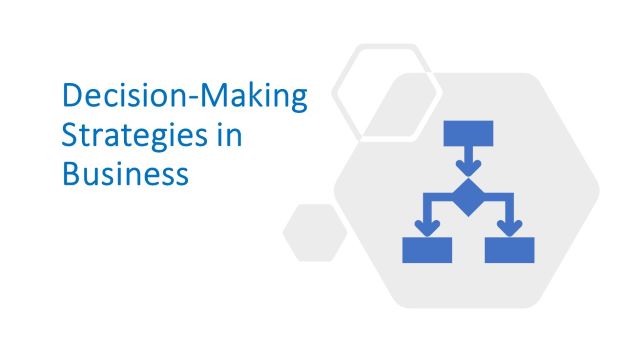Identifying/clarifying the decision to be made
Identifying/clarifying the decision to make in business is one of the most crucial steps to making the right choice. It is vitally important to define the decision's criteria, which may be easily quantified or conflicting. For instance, the desire to cut costs may conflict with maintaining product quality. Other stakeholders may also have separate criteria, which must be addressed. The decision-making process begins by determining how to get the relevant information and how to value it.
Systematic analysis
Intuition and systematic analysis often clash. Sometimes intuition will give you a sense of an uncomfortable situation when a decision is made based on an analysis; however, one should read both sides of the ledger before accepting an analysis. If this doesn’t happen in the analysis, it might mean that more thinking is needed. So, one must reconcile intuition with analysis.
Elimination by aspects
The model of elimination by aspect is a mental shortcut that is used to make decisions. People tend to eliminate features from their lists that they don't need, and instead, focus on what's important. It avoids information overload, and results in satisfying purchases. However, this model does not take into account the fact that a desirable attribute compensates for the undesirable one. As such, it is often used in the wrong way to make decisions.
In a multicriteria decision, you must consider the value of each outcome and eliminate alternatives that do not meet one or more of the criteria. This strategy is useful for short-fuse decisions, where the decisionmakers may only be considering a few attributes. However, if the decision involves many factors, it's advisable to use the expected-value approach, which is more precise. In this approach, the elicitor sets a cut-off value for the most important attributes and allows the others to move on to the next alternatives.
Forecasting the outcome of each option
Developing effective forecasts can make or break a business. Moreover, when a forecast is made with more details, it will be more accurate, ethical and quality-based. The quality of a forecast is a result of its detail, complexity, and inclusion of critical elements of the problem scenario.
The first step is identifying the underlying causes of the problem. These causes will determine which alternatives are most likely to affect the outcome. Root cause analysis via cause and effect diagram, Ishikawa diagram, 5-Whys analysis and other investigative techniques are helpful in accurately identifying the underlying cause(s) of a business problem. The second step is identifying the decisionmakers. A decision made by person(s) who have no clear understanding of the problem situation may lead to a less profitable one. Hence, decisions must be made after considering views of all people close to the problem (process). Decisions based on a forecast that identifies the causes is more accurate.
Joint decision-making
In today's e-business environment, collaborating with partners is essential to achieve goals. But how can a company make joint decisions? A published research explored the influences of organizational factors on joint decision-making. This research collected corporate-level data through a Web survey and analyzed the data using a statistical method called PLS based on structured equation modeling. The findings revealed that joint decision-making is influenced by the knowledge creation capabilities of partners and inter-organizational process modularity.
An important point to note is that, the size and complexity of an organization can present some major hurdles to implementing joint decision-making. One common issue is overlapping responsibilities that can cause inefficiency and slow response to opportunities. Another major institutional challenge is a conflict between getting something done quickly and bringing the entire company along with the decision. Many times, fast decisions are celebrated and are not well-informed. The benefits of delegating/sharing (decision) responsibility are multiple, but the two major benefits are: the decision-making process becomes more efficient, and more people are involved.
How fast a decision is made and how good is that decision determines how far the business will thrive |
Related reading:
#operationalexcellence #decisionmaking #strategy #strategymanagement #decisiontools #strategicplanning #challengesofdecisionmaking #decisionmakingstrategies





















